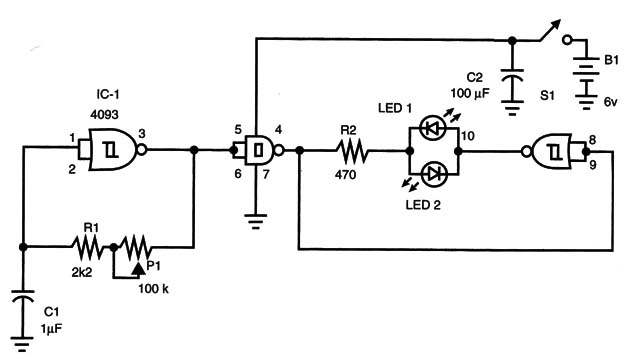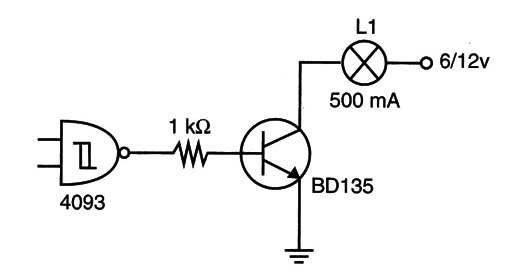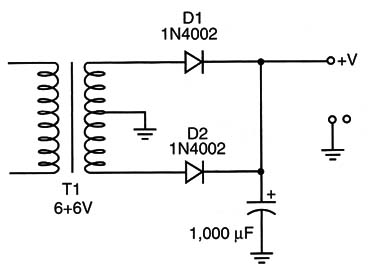Figure 1 shows a circuit that can be used to drive two LEDs that will produce alternate flashes of light.

The frequency is controlled by P1, and the circuit can be powered from four AA cells or even a small 9-volt battery. This circuit directly drives the LEDs without the need for a power stage because the complementary metal oxide semiconductor (CMOS) IC can sink, or source, the necessary current for this task.
If the reader wants to drive more powerful loads, such as small lamps with currents up to 500 milliamps and voltages that range between 6 and 12 volts, a driver stage such as the one shown in Figure 2 is recommended.

When powerful loads are used and the circuit operates for long intervals, it is recommended that you use a power supply that replaces the cells.
Figure 3 shows a simple power supply recommended for this circuit.

This circuit can also be used to provide energy for the basic project using the 555 IC. The transformer has a primary according to the AC power line and a secondary rated to 6 V x 250 to 500 milliamps.
IC-1: 4093 CMOS integrated circuit
LED1, LED2: Common LEDs (green and red)
P1: 100 k ohm potentiometer, lin or log
R1: 2.2 k ohm x 1/8 W resistor, red, red, red
R2: 470 ohm x 1/8 W resistor, yellow, violet, brown
C1: 1 µF x 16 V electrolytic capacitor
B1: A 6 V source of four AA cells and holder
S1: On/off switch
Other:
PCB, wires, solder, etc.



